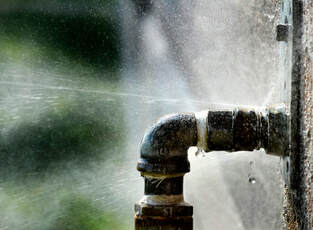Unearthing Concealed Water Line Leaks: Six Proven Strategies
Unearthing Concealed Water Line Leaks: Six Proven Strategies
Blog Article
The article below in relation to Detecting hidden plumbing leaks is quite insightful. Don't miss it.

Early discovery of dripping water lines can mitigate a potential catastrophe. Some little water leakages might not be visible.
1. Analyze the Water Meter
Every home has a water meter. Inspecting it is a proven manner in which aids you uncover leakages. For beginners, shut off all the water resources. Make sure nobody will flush, utilize the faucet, shower, run the cleaning equipment or dish washer. From there, most likely to the meter and also watch if it will transform. Considering that no one is using it, there should be no motions. That shows a fast-moving leakage if it relocates. Furthermore, if you spot no changes, wait an hour or 2 and inspect back once more. This means you might have a sluggish leakage that might also be underground.
2. Examine Water Intake
If you find unexpected adjustments, despite your intake being the same, it means that you have leaks in your plumbing system. An unexpected spike in your costs shows a fast-moving leakage.
Meanwhile, a stable boost on a monthly basis, despite having the very same behaviors, reveals you have a slow-moving leakage that's likewise slowly intensifying. Call a plumber to extensively inspect your property, specifically if you feel a cozy area on your flooring with piping beneath.
3. Do a Food Coloring Test
When it comes to water intake, 30% comes from commodes. If the color in some way infiltrates your bowl throughout that time without flushing, there's a leak in between the tank as well as bowl.
4. Asses Outside Lines
Do not forget to examine your outside water lines too. Needs to water leak out of the connection, you have a loosened rubber gasket. One tiny leakage can squander lots of water and spike your water expense.
5. Assess the situation and inspect
House owners should make it a behavior to examine under the sink counters and even inside cupboards for any bad odor or mold development. These 2 warnings show a leak so punctual attention is needed. Doing regular evaluations, even bi-annually, can conserve you from a significant problem.
Inspect for discolorations and compromising as the majority of devices and pipelines have a life expectancy. If you believe leaking water lines in your plumbing system, do not wait for it to intensify.
Early discovery of leaking water lines can minimize a possible disaster. Some small water leakages may not be noticeable. Checking it is a guaranteed method that aids you discover leakages. One tiny leakage can throw away tons of water and also surge your water expense.
If you suspect dripping water lines in your plumbing system, do not wait for it to escalate.
WARNING SIGNS OF WATER LEAKAGE BEHIND THE WALL
PERSISTENT MUSTY ODORS
As water slowly drips from a leaky pipe inside the wall, flooring and sheetrock stay damp and develop an odor similar to wet cardboard. It generates a musty smell that can help you find hidden leaks.
MOLD IN UNUSUAL AREAS
Mold usually grows in wet areas like kitchens, baths and laundry rooms. If you spot the stuff on walls or baseboards in other rooms of the house, it’s a good indicator of undetected water leaks.
STAINS THAT GROW
When mold thrives around a leaky pipe, it sometimes takes hold on the inside surface of the affected wall. A growing stain on otherwise clean sheetrock is often your sign of a hidden plumbing problem.
PEELING OR BUBBLING WALLPAPER / PAINT
This clue is easy to miss in rooms that don’t get much use. When you see wallpaper separating along seams or paint bubbling or flaking off the wall, blame sheetrock that stays wet because of an undetected leak.
BUCKLED CEILINGS AND STAINED FLOORS
If ceilings or floors in bathrooms, kitchens or laundry areas develop structural problems, don’t rule out constant damp inside the walls. Wet sheetrock can affect adjacent framing, flooring and ceilings.
https://www.servicemasterbyzaba.com/blog/how-to-detect-water-leakage-in-walls/

As a passionate person who reads on Top leak detection hacks, I thought sharing that excerpt was sensible. Enjoyed reading our piece? Please share it. Let other people locate it. Bless you for your time. Come back soon.
Act now! Report this page